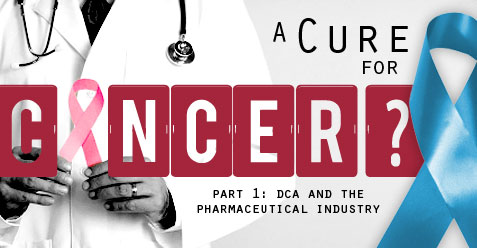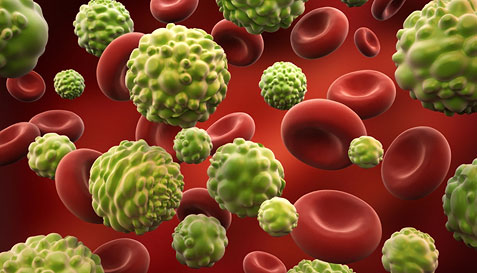
November 16, 2012
Furci Home / Fitness Channel / Bullz-Eye Home
I'm sure you've heard the rumor that has been floating around for decades: there is a cure for cancer, but the medical and pharmaceutical industries don't want to use it because it would put a halt to their cash cows -- chemotherapy and surgery. It sounds logical, considering the cost of cancer treatment is skyrocketing with no end in sight. According to USA TODAY, "Of the nation's 10 most expensive medical conditions, cancer has the highest per-person price. The total cost of treating cancer in the U.S. rose from about $95.5 billion in 2000 to $124.6 billion in 2010, the National Cancer Institute estimates." [1]
Even though I'm a strong critic of the pharmaceutical and medical communities, I'm not so confident there is an actual cure for cancer. I'm even less confident that if there was a cure for this horrible disease, these industries would keep it from us. However, one thing I am certain of is that these industries lose interest if there isn't a big payback. In other words, if these industries don't see a way to corner the market with patents and charge outrageous amounts of money for their products, there is little or no investment.
If the pharmaceutical or medical industries don't invest money, this puts an almost complete halt to research. So even if a substance shows promise, like vitamin D3, because the return will be less than standard, companies will not invest. This only hurts the consumer, because we'll never know vitamin D3's full potential.
 A prime example of the pharmaceutical industry turning a blind eye to a drug's development -- because the financial return won't be anything near the billions generated by useless cholesterol lowering medications -- is dichloroacetate, or DCA. The patent on DCA ran out a while ago, and there is no way a pharmaceutical company would put money into a substance it cannot keep from the competition. This is only going to hurt the general public because preliminary research regarding DCA as a treatment for cancer is very positive.
A prime example of the pharmaceutical industry turning a blind eye to a drug's development -- because the financial return won't be anything near the billions generated by useless cholesterol lowering medications -- is dichloroacetate, or DCA. The patent on DCA ran out a while ago, and there is no way a pharmaceutical company would put money into a substance it cannot keep from the competition. This is only going to hurt the general public because preliminary research regarding DCA as a treatment for cancer is very positive.
A study performed in 2007 out of the University of Alberta in Edmonton, Canada, started a firestorm of interest when they announced that rats fed DCA showed rapid tumor regression without any apparent side effects. [2]
In 2009, a study published in the Breast Cancer Research and Treatment Journal reported the sensitivity of breast cancer cell lines to DCA ranged from 20 percent to 80 percent inhibition of cell growth over four days. [3]
In a study published in June 2012, researchers concluded that the results of treating cervical carcinoma with DCA show a quick and effective pathway to a cure. [4]
Though their findings seem promising, many researchers themselves are the first to say the results of the above studies, and others, are very preliminary. They are cautioning cancer patients against medicating themselves with DCA prior to clinical trials:
If you are a cancer patient and have interest in trying DCA, there are currently clinical trials (as of publication of this article) that are recruiting participants. However, don't just haphazardly jump on the bandwagon before educating yourself on the pros and cons of this drug, and how it works. Some of the trials will be studying DCA in conjunction with other chemo drugs and radiation. All of the treatments can have devastating side effects. I know that it's easy for me to hand out advice like this when I don't have cancer, but I'm asking you to make an informed decision. [5]
In order to understand how DCA works, you need to understand the basic difference between a cancer cell's metabolism and a normal cell's metabolism. A cancer cell and a normal cell differ in how they develop their energy.
Most of the cells in our bodies contain the organelle mitochondria. Because mitochondria are the primary energy producers within the cell, they are often referred to as the "cell's power plant." For normal cells, the main chemical process that occurs within the mitochondria that produces energy is called glucose oxidation, or cellular respiration (not to be confused with breathing).
Oxidation is any chemical reaction that combines oxygen with another molecule; the molecule that is combined with oxygen is understood to be oxidized. Cellular respiration is an aerobic process, requiring oxygen to occur. During this process, food (glucose) is broken down and energy is released. This energy is often not used directly by the cell, but stored as adenosine triphosphate (ATP) to be used as needed.

Glycolysis is another chemical reaction that produces energy, which occurs in the cytoplasm of the cell. Unlike cellular respiration, it's an anaerobic process, meaning without oxygen, and relies on the presence of glucose. This form of energy production is also referred to as fermentation, and is the preferred energy source of cancer cells:
"Cancer, above all other diseases, has countless secondary causes. But, even for cancer, there is only one prime cause. Summarized in a few words, the prime cause of cancer is the replacement of the respiration of oxygen in normal body cells by a fermentation of sugar. All normal body cells meet their energy needs by respiration of oxygen, whereas cancer cells meet their energy needs in great part by fermentation. All normal body cells are thus obligate aerobes, whereas all cancer cells are partial anaerobes. From the standpoint of the physics and chemistry of life, this difference between normal and cancer cells is so great that one can scarcely picture a greater difference. Oxygen gas, the donor of energy in plants and animals, is dethroned in the cancer cells and replaced by an energy-yielding reaction of the lowest living forms, namely, a fermentation of glucose." [6]
In normal cells, pyruvate is required for glucose oxidation. The enzyme pyruvate dehydrogenase kinase (PDK) acts as the gatekeeper to regulate the flow of pyruvate. If PDK is present, it suppresses the transport of pyruvate into the mitochondria, and the cell is forced to rely on glycolysis (fermentation) even if oxygen is accessible.
PDK is very active in cancer cells. As stated above, if you suppress the PDK, it forces the cancer cell to switch to glucose oxidation. Forcing the cancer cell to switch is where DCA makes its mark.
DCA suppresses PDK and restarts the cancer cell's mitochondria. This not only forces the cell to change to glucose oxidation, it flips on the cell's suicide switch. This happens because one of the many functions of mitochondria is apoptosis, or cell suicide. They react to abnormalities in the cell by self destruction. So when the mitochondria are restarted and they realize it's a cancer cell, it kills itself.
The deactivated mitochondrion is the reason cancer grows and spreads so fast. When a cell becomes cancerous, all other life functions except growth stop. DCA reverses this and has been shown to work well with other treatments, like radiation. A number of studies performed to date have been very encouraging. Some studies, however, reported that DCA treatment induced significantly increased growth. [7]
It is worth noting that DCA is not a natural substance. It's a small chemical derived from trichloroethylene, a very volatile compound believed to cause cancer. Because DCA is such a small chemical, it can travel to places other drugs cannot, like the brain. This is why there is particular interest in treating brain cancer.
The bottom line is we aren't really sure of the effects DCA will have on the body, positive or negative. So, if you're already using a cancer medication, DCA's effects are going to be unpredictable and potentially dangerous.
As Benjamin Franklin said, "An ounce of prevention is worth a pound of cure." Although I believe keeping up to date with new and innovative treatments for cancer is something everyone should do at least to some degree, everyone who is breathing should be more concerned with cancer prevention.
Stay tuned for Part II of this article to learn of several steps you can take to help prevent cancer.
REFERENCES
1. Marchione, M. (2012, February 27). Cancer's growing burden: the high cost of care. USA Today. Retrieved from USAToday.com.
2. Bonnet, S., et al. (2007). A mitochondria-k channel axis is suppressed in cancer and its normalization promotes apoptosis and inhibits cancer growth. Cancer Cell, 11(1), 37-51. Retrieved from ScienceDirect.com.
3. Sun, R., Fadia, M., Dahlstrom, J., & Blackburn, A. (2010). Reversal of the glycolytic phenotype by dichloroacetate inhibits metastatic breast cancer cell growth in vitro and in vivo. Breast Cancer Research and Treatment, 120(1), 253-260. Retrieved from SpringerLink.com.
4. Lui, D., et al. (2012). Necrosis of cervical carcinoma by dichloroacetate released from electrospun polylactide mats. Biomaterials, 33(17), 4362-69. Retrieved from ScienceDirect.com.
5. U.S. National Institute of Health, (n.d.). Clinicaltrials.gov . Retrieved from website: ClinicalTrials.gov.
6. Brand, R. National Institute of Health, National Center for Biotechnology Information. (2010). Biographical sketch: Otto heinrich warburg, phd, md. Retrieved from website: ncbi.nlm.nih.gov.
7. Shahrzad, S. (2010). Sodium dichloroacetate (dca) reduces apoptosis in colorectal tumor hypoxia. Cancer Letters, 297(1), 75-83. Retrieved from CancerLetters.info.
You can follow us on Twitter and Facebook for content updates. Also, sign up for our email list for weekly updates and check us out on Google+ as well.













